in the 18th and early 19th century Jagers played a distinct role on the battelfield, they were either hand picked or voluntered and went through extensive training. They were considered an elite troop. In the American revolution the Hessen jagers outshot and fought their American counter parts at every battle, at both Long Island and charleston they surrounded the American defenses and picked them off at every chance (see bruce Burgoynes translations of German books on the Hessens and the Battle of Long Island) The Duke of Waldeck had a hand picked force of huntsmen to form his jagers/guard unit. Napoleon himself said that Herzog Louis jagers (Wurrtemburg) were the finest he had ever seen in battle and he himself was shot and put a price on jagers heads equiped with air rifles at the battle of Rattisbon by the elite Austrian/Hessen jagers in KUK service. Back to the 18th century Frederick the Great commented on the quality and need for Grenzer and jager troop of both his and the Austrian army. Tom Plunket of the 95th which regiment was raised and trained by Hessen jagers in the British army shot a French General and his trumpeter at 300 yards (head shots) using the iron sights of his Baker rifle. sorry back to the American rev Major von Ewald wrote the first tactical doctrine for insurgetn warfare for the Hessen jagers. my qustion is: after this long and colorful history of this elite organisation what happened to them in the 1st world war? did they still recieve the advanced weapons training as their former comrades, were they stil considered sharp shooters or where they just grunts with a neat hat(shako)? where they still used in small unit actions and intellegence gathering like they were meant to? or did the trenches constrict them as intellegence gathering became everyones responisbility and not a specific group.
You are using an out of date browser. It may not display this or other websites correctly.
You should upgrade or use an alternative browser.
You should upgrade or use an alternative browser.
Jagers in WW1
- Thread starter Muth25
- Start date
Stahlhelm
Active member
This is without exception my favourite topic, which unfortunately means I don't have a quick answer for you. I hope you have a comfy chair.
Not only were the Jaeger of WW1 concidered elite troops and used as assault troops right from the start, they (along with the Pioniere) played a key role in developing modern warfare tactics on the Western Front; the Jaeger due to their independent small unit operational experience and the Pioniere because they were trained in and equipped for seige warfare, which trench warfare essentially is. Due to the nature of the campaign in the East, large scale operational maneuver was still possible and prewar tactics worked fine.
The first Assault detachment was a Sturmkompagnie made up of Jaeger and Pioneers, and was formed and lead by a Hauptmann Rohr, who had previously been an officer in the Garde Schuetzen Battalion, the premier "Jager" Battalion. He and his Jaeger first developed Stormtroop tactics as early as December 1914 and would continue throughout 1915 to work on them in the Vosges sector as part of Army Abteilung Gaede (I think). Although the German Army's command structure was already decentralized for the most part, soldiers like Rohr as well as Pioneer units were already well versed in Auftragstaktik (mission tactics, a.k.a. Fuehren mit Auftrag), where the Officer or senior NCO in charge is given the objective, but it is left up to him to decide how to take it. This required high quality Officers, NCOs and men along with attached specialists who knew their jobs, and the Jager fit the bill. Platoons or squads made up of Jaeger Stormtroops, Assault Pioneers (clearing obstacles, mortar crews, flamethrowers, etc.) and mobile artillery (Infanteriegeschuetze) was the result and the beginning of combined arms tactics used to this day.
The end result of the early successes was the formation of Sturmkompagnien and then Sturmbataillone comprised mostly of unmarried fit men under 25 (volunteers) trained extensively in these new tactics. It's important to remember that the structure used was the Jaeger Battalion instead the Infantry Regiment. Sturmdivisionen, around 16 or so, were also formed. By 1918 regular infantry were trained or being trained in these new tactics, which incorporated "elastic defence", even if they were used mainly to hold the line and rarely as assault troops.
These tactics in which the Jaeger initially played such a vital role were meant to not only overcome the stalemate, at first with limited objectives, but to allow the men to take an objective inflicting maximum damage while suffering minimum loss. A problem that every country was working on to some extent.
The Jaeger were almost always issued with the 98 model carbine throughout the war instead of the 98 rifle, and the carbine would become the main firearm of the Stosstrupp due to its compact size. I'll post a picture of mine if you're interested, 1915 Erfurt made, as soon as I get around to taking a couple of pictures of it. Ankle (usually mountain) boots and puttees, often worn by many Jaeger instead of Jackboots early in the war, would also eventually be favoured by most Stosstruppen. These boots shouldn't be confused with the very unpopular low grade ankle boots, the so-called paper shoes, being turned out later in the war due to the severe leather shortage.
Not only were the Jaeger of WW1 concidered elite troops and used as assault troops right from the start, they (along with the Pioniere) played a key role in developing modern warfare tactics on the Western Front; the Jaeger due to their independent small unit operational experience and the Pioniere because they were trained in and equipped for seige warfare, which trench warfare essentially is. Due to the nature of the campaign in the East, large scale operational maneuver was still possible and prewar tactics worked fine.
The first Assault detachment was a Sturmkompagnie made up of Jaeger and Pioneers, and was formed and lead by a Hauptmann Rohr, who had previously been an officer in the Garde Schuetzen Battalion, the premier "Jager" Battalion. He and his Jaeger first developed Stormtroop tactics as early as December 1914 and would continue throughout 1915 to work on them in the Vosges sector as part of Army Abteilung Gaede (I think). Although the German Army's command structure was already decentralized for the most part, soldiers like Rohr as well as Pioneer units were already well versed in Auftragstaktik (mission tactics, a.k.a. Fuehren mit Auftrag), where the Officer or senior NCO in charge is given the objective, but it is left up to him to decide how to take it. This required high quality Officers, NCOs and men along with attached specialists who knew their jobs, and the Jager fit the bill. Platoons or squads made up of Jaeger Stormtroops, Assault Pioneers (clearing obstacles, mortar crews, flamethrowers, etc.) and mobile artillery (Infanteriegeschuetze) was the result and the beginning of combined arms tactics used to this day.
The end result of the early successes was the formation of Sturmkompagnien and then Sturmbataillone comprised mostly of unmarried fit men under 25 (volunteers) trained extensively in these new tactics. It's important to remember that the structure used was the Jaeger Battalion instead the Infantry Regiment. Sturmdivisionen, around 16 or so, were also formed. By 1918 regular infantry were trained or being trained in these new tactics, which incorporated "elastic defence", even if they were used mainly to hold the line and rarely as assault troops.
These tactics in which the Jaeger initially played such a vital role were meant to not only overcome the stalemate, at first with limited objectives, but to allow the men to take an objective inflicting maximum damage while suffering minimum loss. A problem that every country was working on to some extent.
The Jaeger were almost always issued with the 98 model carbine throughout the war instead of the 98 rifle, and the carbine would become the main firearm of the Stosstrupp due to its compact size. I'll post a picture of mine if you're interested, 1915 Erfurt made, as soon as I get around to taking a couple of pictures of it. Ankle (usually mountain) boots and puttees, often worn by many Jaeger instead of Jackboots early in the war, would also eventually be favoured by most Stosstruppen. These boots shouldn't be confused with the very unpopular low grade ankle boots, the so-called paper shoes, being turned out later in the war due to the severe leather shortage.
Indeed I plan on buying a k98 from Hermann-Historica if I can get the import license from the ATF. It is interesting that they carried the same rifle in both world wars. Have always been jagers this topic is very interesting to me. 11th Marburg from 1815 on, and the Hesse-Kassel Jager corps before that. In Storm of Steel Junger briefly describes going into an assualt with jagers saying he saw an officer behind him. He does go into detail of the storm troopers saying that they were very brave and hot headed and would get into fights with eachother while attack enemy positions if one another called another one afraid. He also describes how one Storm trooper rolled up 50 yards of trench by himself, this was against the British infantry too who are no slouches. your post was very informative. Do you have any sources describing them from 1866-1918, I have very many from the 18th and early 19th cent. Best regards.
Michael Muth
Michael Muth
Stahlhelm
Active member
Here's a couple of pics of my K 98a (or is it az?, I forget) I took this morning. I couldn't take many good close-ups because my camera is a piece of crap, but as I mentioned, it is Erfurt made, 1915 dated, with all matching #s except for the bolt. The sling is orignial, unit marked on the brass button, and has a very faint date stamped into the leather - either 1915 or 1916.
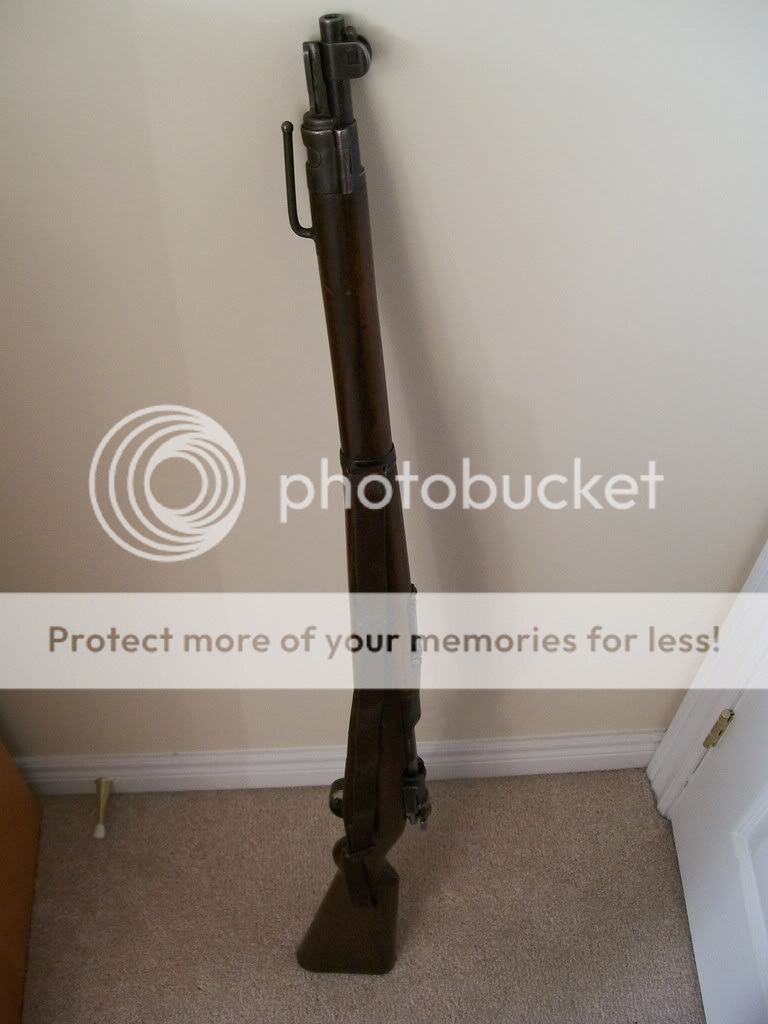
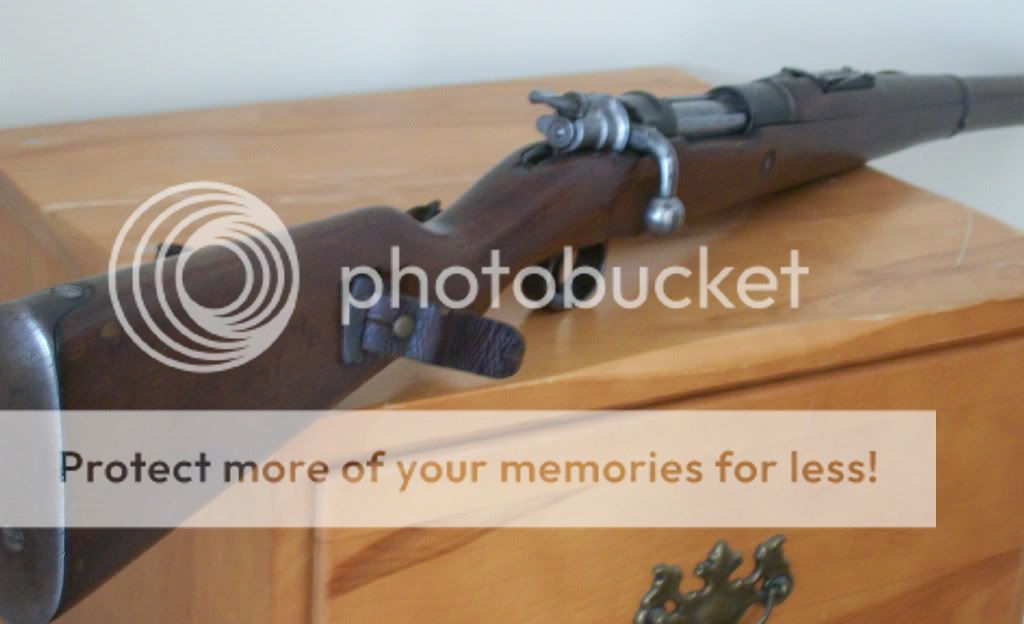

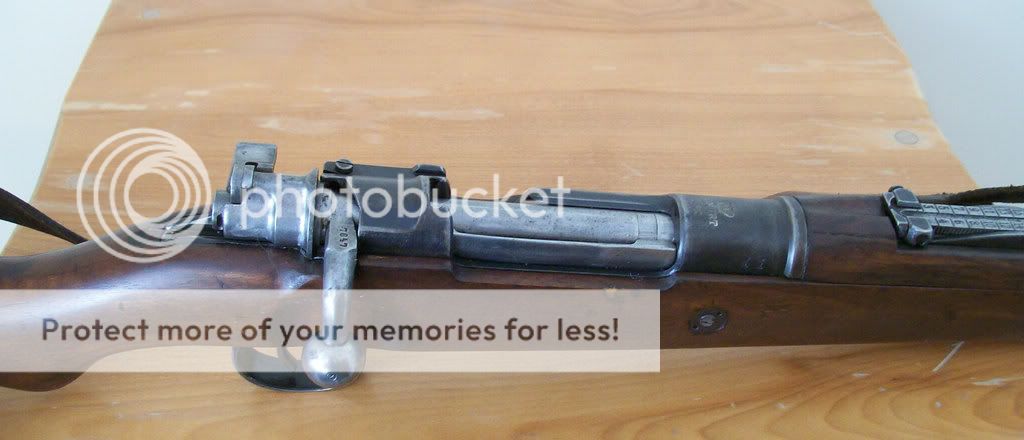
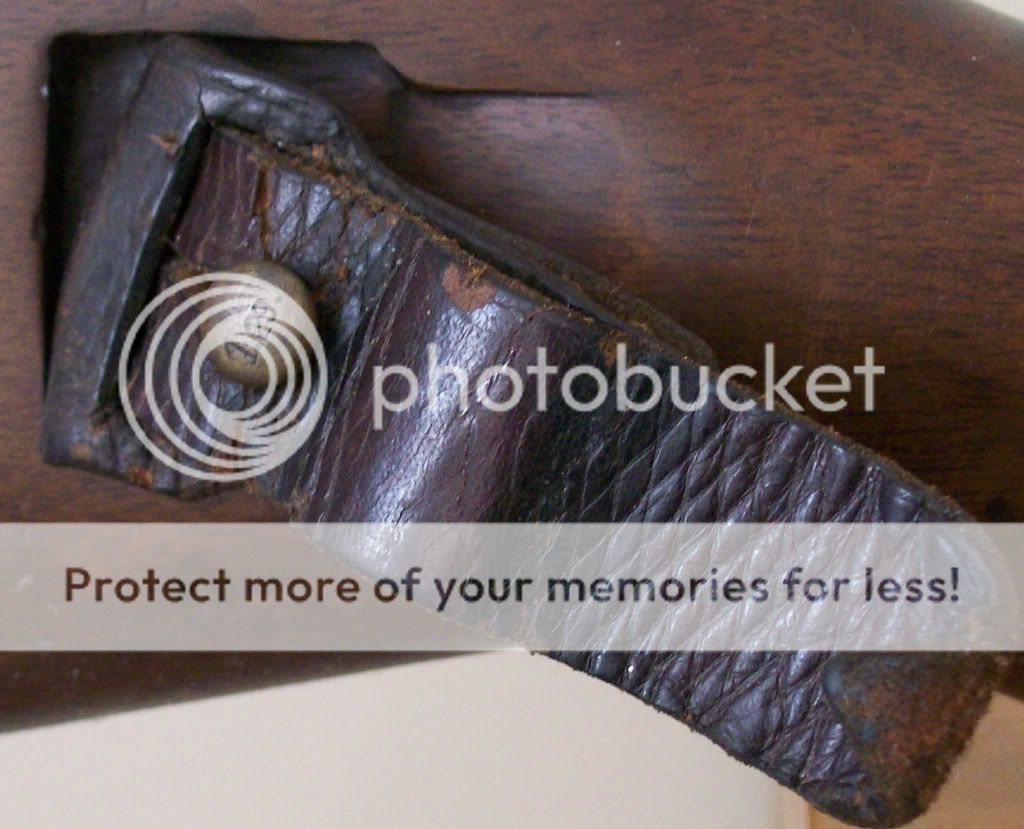
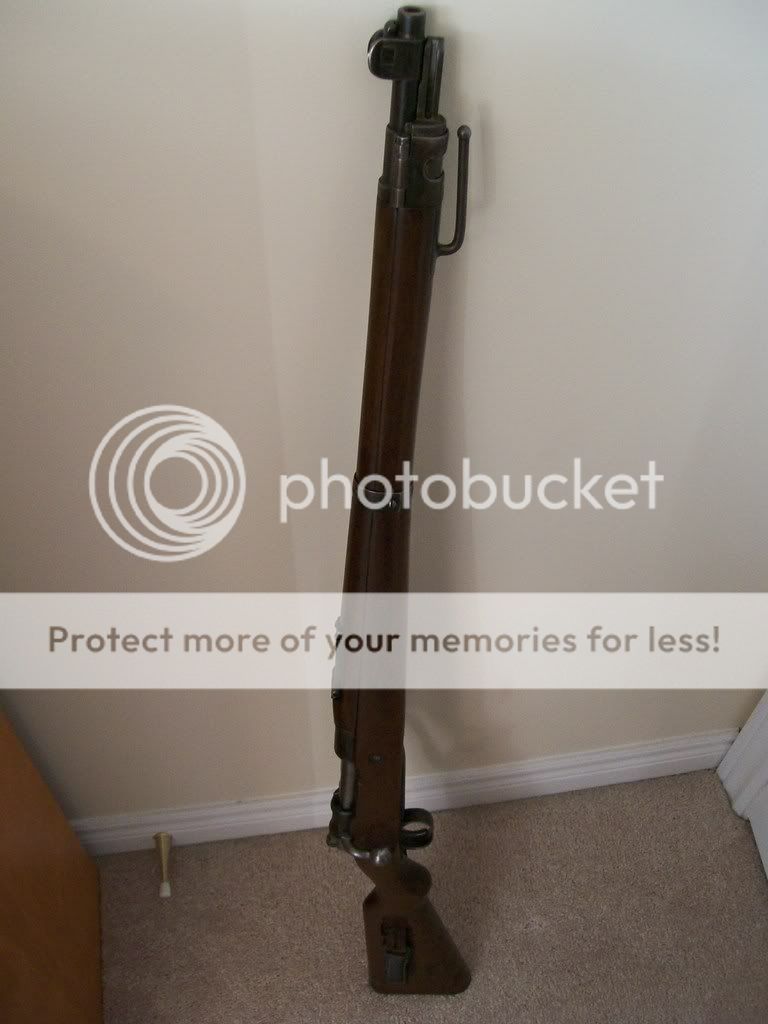






Wyliecoyote
New member
AAAAAAAAAAAHhhhhhhhhhhh!
K 98 AZ, "Karabiner 98 mit Aufpflanz-und-Zuzammensetzvorrichtung"( bayonet attachment and stacking hook), a very nice rifle! They are also known as K98(a) now, as this was the designation given this carbine by the Reichweer, Post-War.
Geo
K 98 AZ, "Karabiner 98 mit Aufpflanz-und-Zuzammensetzvorrichtung"( bayonet attachment and stacking hook), a very nice rifle! They are also known as K98(a) now, as this was the designation given this carbine by the Reichweer, Post-War.
Geo
That would be interesting to see the ratings, I am sure the Garde was the top. Rommel was latter attached to a mountian unit. I have a 1813 model shako from the East Prussian Jagers and a model 1860 Landwher. I also have a model 1805 baker rifle and a few other Napoleonic jager items. I will have to post them when I am back from school. Google books has many volumes about 18th cent jagers. If you have references about ww1 jagers that would be a great help.
Stahlhelm
Active member
Thanks for the clarification on the Karabiner designation Geo. I've never had it explained so clearly. I have a 1915 Erfurt sawback bayonet that goes nicely with the rifle.
Michael, I unfortunately don't have any good references on the Jaeger from the end of the 19th Century up to the war. As for your question regarding their status as marksmen, it may be that as the war progressed and it became apparent how vital grenades were in the trenches, these troops also paid less attention to their marksmanship. The argument has been made that some German soldiers lost their rifle skills by the middle of the war due to the nature of the fighting, and high ranking Officers did state that they wanted to see intensified marksmanship training prior to the 1918 spring offensive. The reason for wanting good marksmen was likely because of the large scale operational movement that was expected to result during this time, where rifles would play a more important role than in the shell holes and trenches.
I'm looking forward to seeing your Napoleonic era collection.
The U.S. ratings of German divisions, etc, were not only determined by actual performance, but often took into account social, political and even the ethnic make-up of the units, i.e. if they came from socialist areas, or if the area had a large ethnic polish population, etc. I do know that a few Landwehr units were rated poorly, although they had performed as well as any 1st class rated unit. I'd have to look up which ones.
Michael, I unfortunately don't have any good references on the Jaeger from the end of the 19th Century up to the war. As for your question regarding their status as marksmen, it may be that as the war progressed and it became apparent how vital grenades were in the trenches, these troops also paid less attention to their marksmanship. The argument has been made that some German soldiers lost their rifle skills by the middle of the war due to the nature of the fighting, and high ranking Officers did state that they wanted to see intensified marksmanship training prior to the 1918 spring offensive. The reason for wanting good marksmen was likely because of the large scale operational movement that was expected to result during this time, where rifles would play a more important role than in the shell holes and trenches.
I'm looking forward to seeing your Napoleonic era collection.
The U.S. ratings of German divisions, etc, were not only determined by actual performance, but often took into account social, political and even the ethnic make-up of the units, i.e. if they came from socialist areas, or if the area had a large ethnic polish population, etc. I do know that a few Landwehr units were rated poorly, although they had performed as well as any 1st class rated unit. I'd have to look up which ones.
Stahlhelm
Active member
I previously said that Hauptmann Willy Rohr formed the first Assault company. He actually didn't form it, but took over from another innovator, an Officer named Calsow (Caslow or Kalsow in some books), who had also been experimenting with new tactics and was trying out a Krupp mobile Infantry gun. He was focused on using Pioneers and these Infantry guns to attack strongpoints and fortifications instead of relying on Artillery fire being called in. Due to these early guns being ineffective as well as the poor overall performance of the formation, Calsow was replaced by Rohr sometime mid-1915. Eventually, Infantry guns would be successfully used. Rohr's Pioniere would end up not only spearheading assaults and training NCOs and Officers, but were also the perfect candidates to try out new weapons and equipment in trials and in battle, such as the first steel helmets during trials in December 1915 and again in February 1916 at Verdun.
That is very interesting. One would think that with the type of warfare that the use and issue of Submachine guns would of been more prevelent. In comparison to ww2 the amount of tactical inovations for field use never was devolped like in the second. espically with weaponary. how often was the body armor used by the storm troopers? looking back to Junger he never mentions using it or commenting on it by other storm trooper detachments. I will post my jager items and the rest of my Napoleonic era collection as soon as possible.
Stahlhelm
Active member
I guess someone had to come up with the concept of a submachinegun first. I remember reading that the Italians were the first to use fully automatic guns firing pistol ammo, but these were only mounted on planes and even bicycles. Many German stormtroopers used the long barrelled Artillery Lugers with attachable stocks, which had a snaildrum magazine holding I think 30 rounds. This turned the pistol into a sort of short semiautomatic rifle which worked great in close quarter fighting. The MP-18 submachinegun, which finally was used in the last year of the war and used the same snaildrum magazine, was never made in large enough quantities to satisfy demand.
As for innovation, the Germans had established a solid framework of small unit tactics by the end of WW1, a good example of which is the combined arms tactics I mentioned earlier, where infantry, pioneers, artillery etc. units are formed, or in emergencies, thrown together as the situation or operation required. This was the forerunner of the Kampfgruppen (Battle Groups) that the Germans would use in WW2, of course by this time with tanks and weapons their fathers would never have dreamed of. The responsiblities, initiative and leadership roles given to NCOs and the establishment of squads as the smallest independant tactical unit in the German Army was also an immensely important result of WW1, for the most part thanks to that Army's decentralized command structure, and the fact that enough high ranking Officers encouraged initiative and knew a good idea when they heard it. These are things that wouldn't happen in many Armies until well after WW2.
In the German Army, the trench plates, body armour and helmet frontal shields proved unsuccessful in offensive operations, and were generally unpopular in static situations as well. The designers of the steel helmet even initially worried that it would be rejected by the men due to its weight and bulk. This of course wasn't the case. I haven't looked into it much, but it may be possible that helmet frontal plates and/or armour was used more often by the Austrians and Italians in the mountains, where a shell or any other explosion threw up more than just shrapnel and earth.
This picture shows German Stosstrupps training with trench shields.
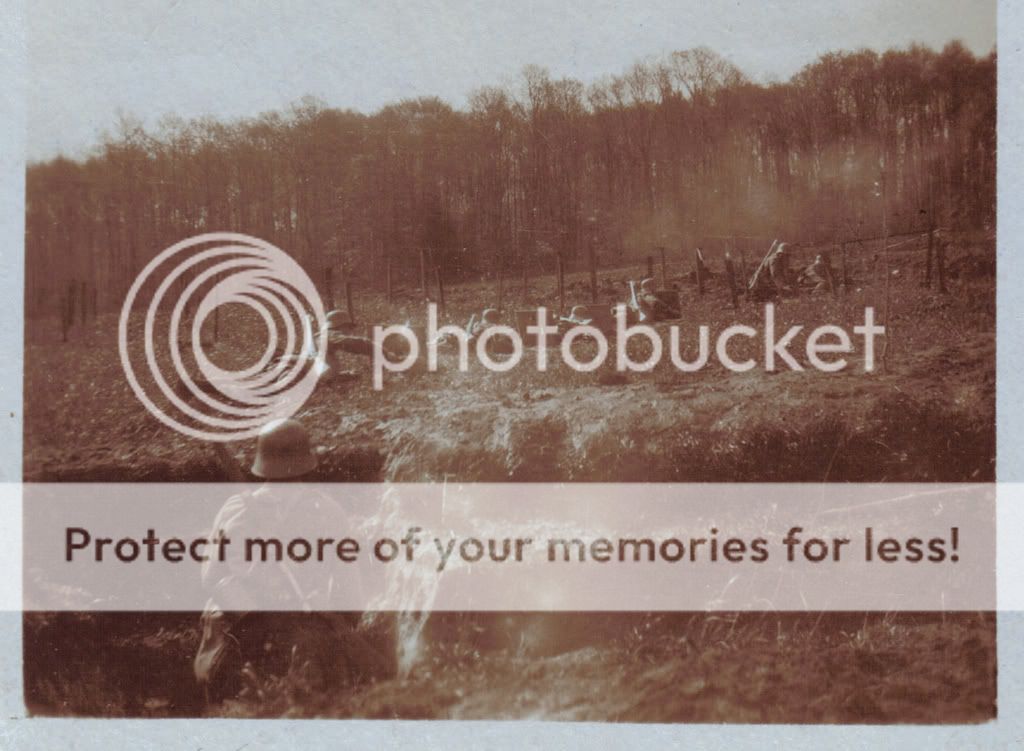
Same excercise. The soldiers with shields are just visible on the bottom left.
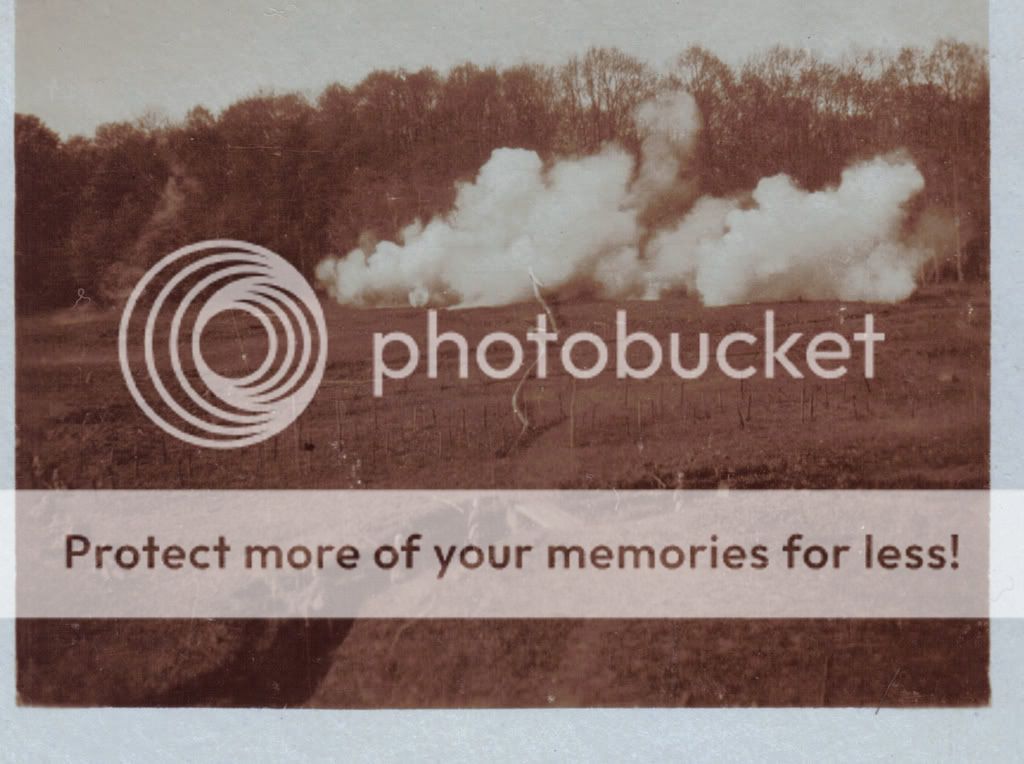
As for innovation, the Germans had established a solid framework of small unit tactics by the end of WW1, a good example of which is the combined arms tactics I mentioned earlier, where infantry, pioneers, artillery etc. units are formed, or in emergencies, thrown together as the situation or operation required. This was the forerunner of the Kampfgruppen (Battle Groups) that the Germans would use in WW2, of course by this time with tanks and weapons their fathers would never have dreamed of. The responsiblities, initiative and leadership roles given to NCOs and the establishment of squads as the smallest independant tactical unit in the German Army was also an immensely important result of WW1, for the most part thanks to that Army's decentralized command structure, and the fact that enough high ranking Officers encouraged initiative and knew a good idea when they heard it. These are things that wouldn't happen in many Armies until well after WW2.
In the German Army, the trench plates, body armour and helmet frontal shields proved unsuccessful in offensive operations, and were generally unpopular in static situations as well. The designers of the steel helmet even initially worried that it would be rejected by the men due to its weight and bulk. This of course wasn't the case. I haven't looked into it much, but it may be possible that helmet frontal plates and/or armour was used more often by the Austrians and Italians in the mountains, where a shell or any other explosion threw up more than just shrapnel and earth.
This picture shows German Stosstrupps training with trench shields.

Same excercise. The soldiers with shields are just visible on the bottom left.

zipperheads9
New member
Prioe to WW1 Jagear unit's seem to be predominatly issued with MG08's and , that would indicate a marksman to me.
I seem to remember the bergman was really developed for transport troops , the storm troops adopted it, ther is an adapter for the snail drum mag , this also causes an unbalalnced weapon.
There were several Karbiines issued but , the most popular being the Kar 98 A .
The Pioneer's Jagaers and even seabattalion's adapted well to new tactic's as they were not stuck with officer's that had set infantry idea.
Jager, rifle and voltiger , became fancy well drilled troops , but no better than any other well trained Infantry.From 1890's till 1914.
The Rifle was first adapted as military use by the brittish in the AWI .But like the Napoleonic era they did not know how to apply these troops.
I really look forward to your napoleonic pics.
Mark
I seem to remember the bergman was really developed for transport troops , the storm troops adopted it, ther is an adapter for the snail drum mag , this also causes an unbalalnced weapon.
There were several Karbiines issued but , the most popular being the Kar 98 A .
The Pioneer's Jagaers and even seabattalion's adapted well to new tactic's as they were not stuck with officer's that had set infantry idea.
Jager, rifle and voltiger , became fancy well drilled troops , but no better than any other well trained Infantry.From 1890's till 1914.
The Rifle was first adapted as military use by the brittish in the AWI .But like the Napoleonic era they did not know how to apply these troops.
I really look forward to your napoleonic pics.
Mark
Jagers were first used and devolped by the austrians in the form of rugged Hungarian Grenzer or Germanic foresters equiped wiht rifles or fast loading carbines being brigaded with light cavalry in the wars with Frederick the Great. He adopted them as well as the rest of the German states as stated in the first post. the Britts themselves in the Revs did not have any rifle regiments and hense outsourced them to the Hesse-Kassel jager corps and loyalst units in the states. becuase of the effectivness of the Germanic riflemen and When they finally did create a rifle regiment they based it souly off the Germans as they were the best in the world at the time. They designed their rilfes, uniforms, training, even brought a German to design the training and form the first regiment. becuase of the inferior gunpowder of the Brits they even asked the Hessens and their weapons designers at Pystor to give them the recipe for German gunpowder. this of course was in the 1790's during the french rev.
In the Napoleonic wars every country minus france deployed riflemen in the regiment. The Bavarians even augmented their line regiments with rifles in the form of shutzen companies to increase the deadliness of their light infantry. These men were usually brigaded togehter though in conflicts. During the Nap wars all the Germanic countries would send in the jagers to capture strategic positions such as bridges, fords, and the like as their formations and drill was more flexible and adaptive toward these types of operations (this was also true with Grenadiers, but they more often stormed fortifications). Jagers played such a large role in the Napoleonic wars that during the 1813 wars of liberation the Prussians increased their jager units almost tenfold, as the french had no response to the standoff killing potenial of the rifleman. for examples of the superior fighting skills of the German jager during that conflict see with eagles to glory, the osprey campaign series books and men at arms, the action at le haye sainte at the British center at waterloo, Bruce Burgoynes translations of German jager memoires and many more. You can pm me for a hearty lists of books. we might have to move onto a new thread about kurassiers (garde du corp included) then grenadiers!
In the Napoleonic wars every country minus france deployed riflemen in the regiment. The Bavarians even augmented their line regiments with rifles in the form of shutzen companies to increase the deadliness of their light infantry. These men were usually brigaded togehter though in conflicts. During the Nap wars all the Germanic countries would send in the jagers to capture strategic positions such as bridges, fords, and the like as their formations and drill was more flexible and adaptive toward these types of operations (this was also true with Grenadiers, but they more often stormed fortifications). Jagers played such a large role in the Napoleonic wars that during the 1813 wars of liberation the Prussians increased their jager units almost tenfold, as the french had no response to the standoff killing potenial of the rifleman. for examples of the superior fighting skills of the German jager during that conflict see with eagles to glory, the osprey campaign series books and men at arms, the action at le haye sainte at the British center at waterloo, Bruce Burgoynes translations of German jager memoires and many more. You can pm me for a hearty lists of books. we might have to move onto a new thread about kurassiers (garde du corp included) then grenadiers!
Stahlhelm
Active member
zipperheads9 said:I seem to remember the bergman was really developed for transport troops , the storm troops adopted it, ther is an adapter for the snail drum mag , this also causes an unbalalnced weapon.
The Bergmann was designed specifically for trench warfare. What I remember reading about the snail drum is that the weapon's designer, Hugo Schmeisser, had a 20? round box mag in mind. The snail drum mag was chosen instead, possibly due to its larger capacity and the fact that many of them were already available. Even with its lopsidedness, it was a state of the art weapon in its day.
What is interesting, is that the Alpenkorps (alpine corps) was actually a classified as a Jäger-Divison; however, it contained a lot more than Jäger, the composition (Kraus vol 1 p.246) was:Stahlhelm said:I completety forgot to mention the Carpathian Corps and especially the Alpenkorps as well as the Ski battalions,which are highlights of the Jaeger's role in the war.
Infanterie-Leib-Regt.
Kgl. Bayer. Jäger-Batl. 1, 2, and 3
Gebirgs-MG -Abt. Nr. 201-210 + Reserve Gebirgs-MG -Abt. Nr. 4
3. Esk des Kgl. Bayer. 4. Chevaulegers-Regt. König
Kgl. Bayer. Feldartillerie Abt. Nr. 187, 203, and 204
Gebirgs-Kanonen Abt. Nr. 1 and 2
Fußartillerie- Batterie Nr. 101 and 102
Pionier-Komp. Nr. 101, 102, 105, and 106
Gebirgs-Mienenwerfer-Abt. Nr. 269 to 272
I have some nice photos and history of the Edelweißabzeichen on a web page HERE if you are interested.
As for the Karpathenkorps, the Karpathenkorps was actually made of Bayern 1. and 200. Inf Divisions so it was not just Jäger either. In addition to Jäger Regts 3, 4, and 5, as well as Res. Jäger Btl. Nr.20, there were many units which made up the Karpathenkorps including infantry, artillery, pioneers, Ulanen, etc.
I have some photos and a very short blurb on the Karpathenabzeichen on the same page.
And seeing as you guys appear to like Jäger as much as I do, I have added a new cap to the "Latest Find" thread.
Stahlhelm
Active member
Beautiful cap Tony. The information and pics on the bunker are an excellent overview. I don't exactly remember which KuK regiments were authorized to wear the Edelweiss on their cap or if these cap emblems were just unofficial. My Grandfather, who fought in the 2nd Kaiserjaeger Regiment, told my father more than once that he and the other men wore an edelweiss on their caps. I unfortunately don't know what it looked like. I assume that many units fighting in the mountains wore a variant of this flower on their headgear. The only authorized use of the edelweiss I remember reading about was on the collar tabs of the Tiroler Kaiserschuetzen, considered true mountain troops.
The fact that, after leaving Italy, the Alpenkorps fought at Verdun starting in the summer of 1916 is interesting. Even thought the terrain doesn't resemble what they were created for, the need for highly motivated elite assault troops in that sector must have made this necessary.
Here's one for you Tony. This Edelweiss is the type worn by the Alpenkorps, but has a gold crown added. Could this connect it somehow to the Bav. Leibregiment?
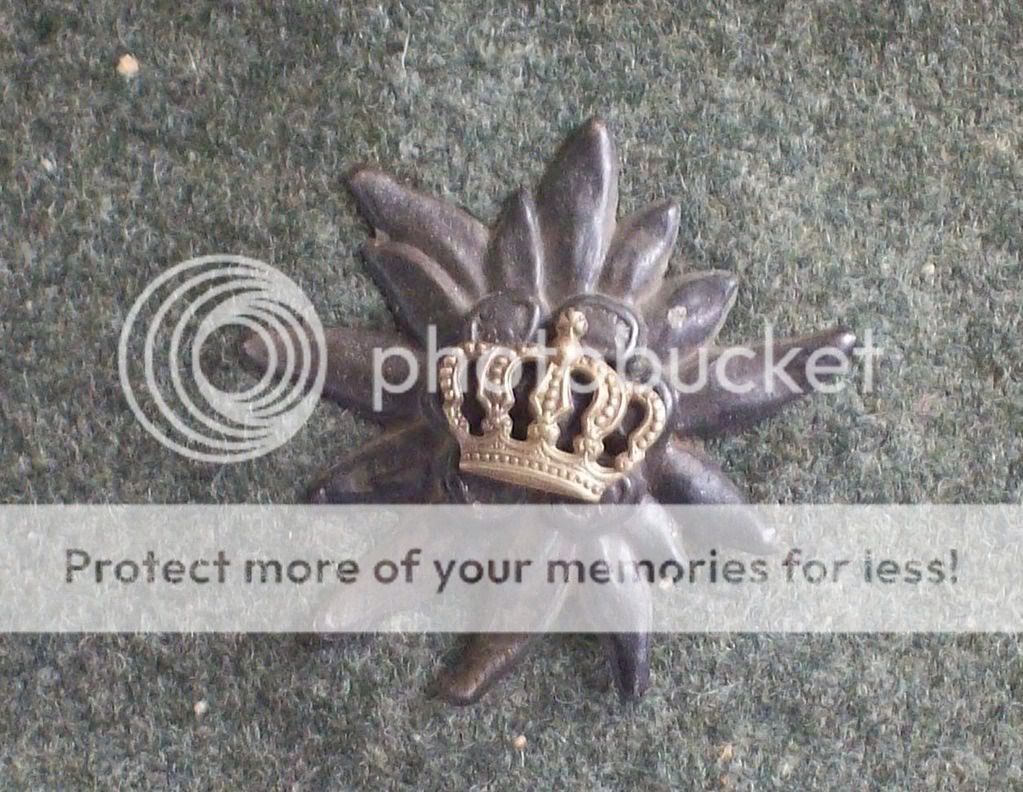
The fact that, after leaving Italy, the Alpenkorps fought at Verdun starting in the summer of 1916 is interesting. Even thought the terrain doesn't resemble what they were created for, the need for highly motivated elite assault troops in that sector must have made this necessary.
Here's one for you Tony. This Edelweiss is the type worn by the Alpenkorps, but has a gold crown added. Could this connect it somehow to the Bav. Leibregiment?

zipperheads9
New member
In a new book "It made you Think Of Home " about a Canadian Lewis Gun section NCo . He descives and the author confirms that the HQ of the AlpenKorps was taken in around amiens 8th or 9th of August.
As for the lack of Rifle in the Brittish Forces the Brittish had no idea how to deploy Rifle unit's and when they di they pocketed any out in Company strength and yes most were Loyalist unit's , but not allmen were . The Grenadier's were the same for that period they were pocketed out then dran together when needed .
The Rifle was anexpensive piece of kit and took training , when you are assembling an army that will slow you down .Maybe that is why the French never adopted the Rifleman . As for the 95th they were not used to there best use either , there 5 battalion's they had the most battle honour's for the Spanish Campaign , but the Brittish still put them out in company and battalion strength ( Brittish battalion 800 men ) .
Most troops that fought in the mountain's in itlay wore the Edelweis .Not all were sanctioned . The 117th Division fought in 2 majour mountain action's , 1 being Capereto .
Mark
As for the lack of Rifle in the Brittish Forces the Brittish had no idea how to deploy Rifle unit's and when they di they pocketed any out in Company strength and yes most were Loyalist unit's , but not allmen were . The Grenadier's were the same for that period they were pocketed out then dran together when needed .
The Rifle was anexpensive piece of kit and took training , when you are assembling an army that will slow you down .Maybe that is why the French never adopted the Rifleman . As for the 95th they were not used to there best use either , there 5 battalion's they had the most battle honour's for the Spanish Campaign , but the Brittish still put them out in company and battalion strength ( Brittish battalion 800 men ) .
Most troops that fought in the mountain's in itlay wore the Edelweis .Not all were sanctioned . The 117th Division fought in 2 majour mountain action's , 1 being Capereto .
Mark
